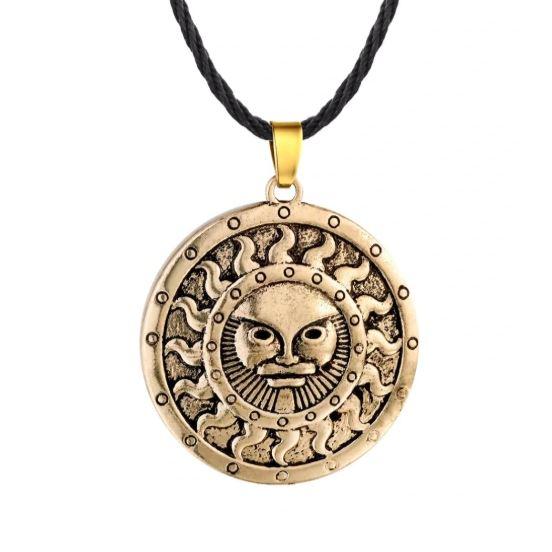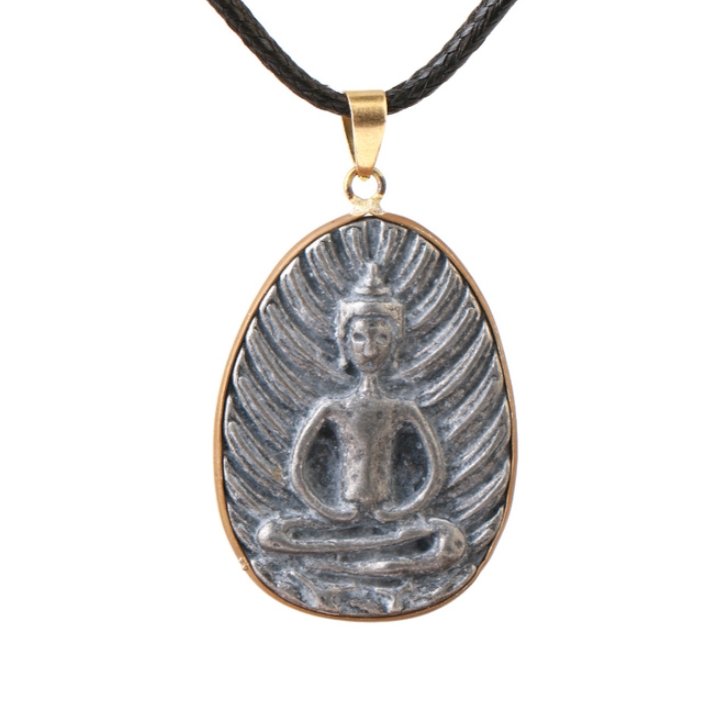Protective Talisman: Which One Suits You? (Top 5)
Since the dawn of time, humans have been interested in the “strange” powers of certain objects.
Whether it's preventing unfortunate events, attracting luck, strengthening our energy... or a combination of all of this, one type of accessory in particular has attracted the attention of experts on the subject: the protective talisman.
First of all, you should know that the word talisman comes from the Greek “teleo”, which literally means “accomplish, realize, implement”. A simple etymological analysis therefore already allows us to realize the effectiveness of talismans!
To remain very concrete, we could define a protective talisman as a magical jewel, generally worn around the neck, which confers certain additional powers to its wearer.
This simple definition also allows you to understand what you can get from the right talisman: healing, success in your personal life and in business, protection, luck... There is something for everyone!
It is for this reason that we have been keen to present to you several talismans, all with different abilities, to allow you to make the best possible choice.
Contents :
Runes and their magical powers
1st talisman: the symbol of the Triskelion
The Triskelion, also known as the Triskelion or Triskelion, is an extremely ancient symbol of protection found carved into the stone of some of humanity's oldest monuments.
When we look at it, we can see three spirals that seem to rotate together in one movement.
We can therefore analyze this protective amulet carrying the Triskelion in two ways: through the movement or through the idea of the trinity.
Movement expresses the eternal march of the world and time. Basically, this gives the Triskelion symbol motivating qualities that will help keep you moving too.
The Trinitarian side of the motif rather shows us the vision of the world that our ancients had.
For them, in fact, everything was divided into three united but distinct parts.
We could for example cite the family (composed of a man, a woman and children), the division of the world between material, spiritual and sacred, etc.
In this sense, this protective talisman also offers a certain link with our roots and our common past.

2nd talisman: the Ankh, treasure of Egypt
The Ankh is one of the most famous and most used emblems of ancient Egypt.
In fact, no one really knows how it appeared.
Overnight, the Ankh began to be used as a hieroglyph, but also almost everywhere in temples and altars dedicated to the Egyptian gods.
This disturbing fact, to say the least, even made specialists say that this symbol would have been brought by someone or “something” from a world superior to ours. As such, certain representations showing some sort of ethereal gods bringing this symbol to the pharaohs are disturbing to say the least...
Regardless, the protective talismans created from the Ankh are today among the most popular and powerful you can find.
It is not for nothing that this Ankh amulet is one of the most loved lucky charms in our community!

3rd talisman: runes and their magical powers
For too many people, runes are just the letters that ancient Norse peoples used to communicate with each other.
Stopping at that would be a graceful mistake.
In fact, runes are above all great vectors of magic and effective tools at the service of magicians around the world.
When we find certain runes engraved on axes, swords or shields or even on a protective talisman, the observation is unequivocal: they were indeed used for reasons of protection.
When we see them alongside sacred altars, again, we cannot be wrong: runes were also used to honor certain deities.
Those that were engraved in the tombs express a link with life, death and the passage from one to the other.
In short, runes are mysterious, yes, but their effectiveness is beyond doubt.

4th talisman: the symbol of Yarilo, a very powerful Slavic god
Most of us have heard of Viking mythology or even ancient Celtic legends.
Slavic culture is clearly known to the general public. However, it left many more traces in our modern world!
A whole bunch of Eastern European peoples continue to pass on the stories of their elders from generation to generation, thus perpetuating an age-old tradition.
In short, Slavic mythology is made up of different gods who each govern certain aspects of nature.
As its name suggests, the one represented by the symbol of this powerful talisman is called Yarilo.
Yarilo was the god of the Sun and the harvest, as well as the first protector of human beings.
Nowadays, many people like to wear the emblem of this god to show their respect for nature.

5th talisman: the famous amulet of Thai monks
Finding an effective protective talisman is an important concern for most Thais.
In fact, this is so true that the use of lucky charms has literally become an institution in this country, where renowned monk-artisans spend their days creating them.
This is so true that some particularly famous models fetch sometimes astronomical sums!
In Europe, religious people were able to make beer or cheese. In Thailand, talisman crafts occupied (and still do) the same place.
Thanks to Buddhist teachings and some knowledge from even more ancient times, the Thais have in any case learned to create effective jewelry with effects that are easy to verify.
If we look at these monk amulets for example, it is clear that it carries a certain harmony, a certain serenity within it.
Lucky charms featured in this article

Triskelion Amulet Marked with Runes
See more
Detachable Amulet of the Cross of Life
See more
Amulet of Yarilo
See more
Thai Monk Amulet
See more

